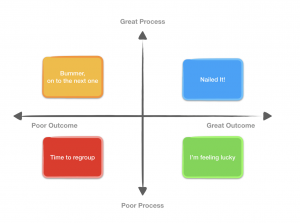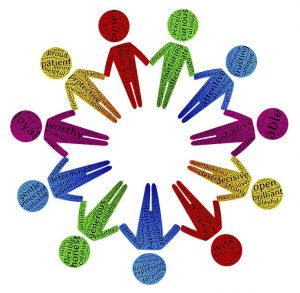 You know those caveats that are posted on every website about every investment transaction? The ones that say, “past performance is not an indicator of future results”. Those same warnings should be adequately displayed on every employee. Past performance in one role, does not necessarily predict future performance in a different role or even the same role at a different time
You know those caveats that are posted on every website about every investment transaction? The ones that say, “past performance is not an indicator of future results”. Those same warnings should be adequately displayed on every employee. Past performance in one role, does not necessarily predict future performance in a different role or even the same role at a different time
Looking backwards- Performance Appraisals
Performance appraisal do a decent job of reflecting backwards. What did an employee accomplish during the year? What goals were met? Where were their biggest wins? There are a number of ways to conduct them, some infinitely better than others.
Annual- Annual performance appraisals are quickly, but not quickly enough, in my opinion, going by the wayside. They have a tendency to really only be focused on the last quarter because asking any manager to remember what accomplishments their 5-10 direct reports had a year ago is a hefty task.
Quarterly- Many companies are taking steps in the right direction and moving to quarterly reviews. These have a few benefits: They decrease the time between action and remediation if necessary, allow for more frequent communication between a manager and his/her direct reports and help to align individual objectives more closely with ever changing company objectives.
Realtime- a few companies have successfully mastered real time feedback. An open social media type platform where feedback is given on a continuous basis, sometimes daily, sometimes weekly, but it an ever-flowing stream of communication similar to a SnapChat streak, but without the pictures- don’t want to miss a day!
360- the really advanced organization have mastered the art of 360 feedback. This is quite a bit harder than it seems because the landmines are around accepting feedback, not just giving it. For this method to be effective, you have to have a self-actualized workforce who is mature enough to handle and disseminate meaningful constructive feedback at all levels throughout the organization.
Looking Forwards- Talent Planning
Organizations have realized that doing an annual performance appraisal and setting a few goals for the next year is far from a perfect process. They know they need to develop leaders to be able to assume increasingly complex roles, but how? In steps Talent (sometimes known as Succession) planning. Talent Planning looks forward. It asks the question- what skills do I need to be able to have a greater impact on the organization? What is my potential?
Impact and potential are defined differently depending on who you talk to and what the organizational culture is. In general terms having greater impact can be defined as having characteristics of Intellectual Curiosity, Critical thinking, Innovation, Agility, Change Management and Collaboration. It is those traits that allow an individual to go beyond where they are today and tackle projects that will have a greater impact on the organization going forward. Not everyone who is a top performer will automatically score high on potential, nor should they. Every organization needs a core of employees who are content being specialists and growing horizontally and not vertically!





